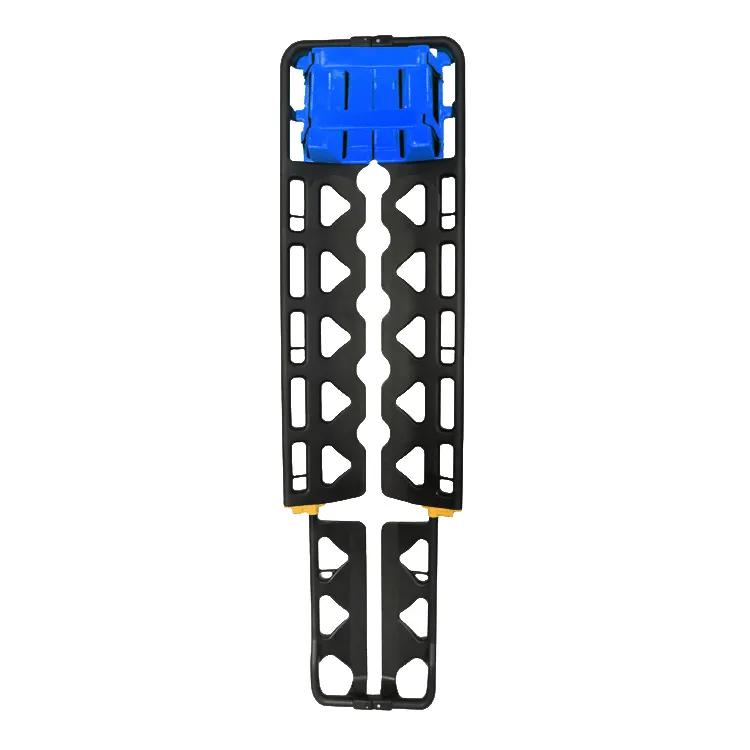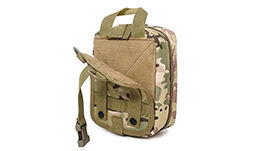Advancements in Medical Structures: Enhancing Emergency Response and Patient Care
In the realm of medical and emergency response, the term "structure" transcends its conventional meaning, embodying the intricate framework and organization that underpin effective patient care. From the design of specialized medical devices to the systematic protocols governing emergency services, structure plays a pivotal role in ensuring stability, support, and protection during critical interventions. This article delves into the latest advancements in medical structures, with a particular focus on various types of stretchers and their indispensable role in patient transport and trauma care.
The Essential Role of Structure in Medical Emergency Systems
In high-stakes environments where every second counts, the structure of medical systems is paramount. It encompasses the physical devices that stabilize patients, the organizational frameworks that coordinate response efforts, and the protocols that guide medical professionals through complex scenarios. A well-structured system ensures that care is delivered efficiently, safely, and in an orderly manner, directly impacting patient survival and recovery outcomes.
Evolution of Stretchers: From Traditional Litter to High-Tech Solutions
Stretchers, also known as litters, have been a cornerstone of patient transport for centuries. Traditional models, often simple in design, have evolved significantly to meet the demands of modern medicine. Today's stretchers incorporate advanced materials, ergonomic designs, and multifunctional features that enhance both patient comfort and ease of use for medical personnel.

Traditional vs. Modern Stretchers
Traditional Stretchers: Simple wood or metal frames with minimal padding, primarily used for basic patient transport in emergency situations.
Modern Stretchers: Equipped with ergonomic designs, adjustable features, lightweight materials, and integrated technology to monitor patient vitals during transport.
Diverse Types of Stretchers: Tailored for Specific Needs
The variety of stretchers available today reflects the diverse needs of medical and emergency scenarios. Each type is engineered to address specific challenges, ensuring that patients receive appropriate care regardless of the situation.
1. Ambulance Stretcher
Designed for use within ambulances, these stretchers are built for quick and secure patient transport. Features often include:
·Adjustable Sections: Allow for easier loading and unloading from ambulances.
·Secure Straps: Ensure the patient remains stable during transit.
·ntegrated Storage: Provides space for essential medical equipment.
2. Hospital Stretcher
Used within hospital settings, these stretchers prioritize patient comfort and accessibility. Key features include:
·Adjustable Heights: Facilitate movement between beds and treatment areas.
·Wheel Locks: Ensure stability when stationary.
·Compatibility with Hospital Beds: Allow for seamless transfer.
3. Medical Stretcher
A versatile option used across various medical environments, medical stretchers are designed for flexibility and durability. They typically feature:
·Lightweight Construction: Enhances mobility and ease of handling.
·Modular Components: Allow for customization based on specific medical needs.
4. Portable Stretcher
Ideal for situations requiring mobility outside of traditional settings, portable stretchers offer:
·Easy Foldability: Enables compact storage and transportation.
·Lightweight Materials: Simplify carrying and maneuvering.
·Durable Design: Ensures reliability in diverse environments.
5. Emergency Stretcher
Engineered for rapid response in critical situations, emergency stretchers emphasize:
·Quick Deployment Mechanisms: Facilitate swift setup and patient arrival.
·Reinforced Frames: Provide robust support for severe injuries.
·Integrated Immobilization Features: Aid in stabilizing limbs and the spine.
6. Scoop Stretcher
A specialized stretcher used for patients with suspected spinal injuries, scoop stretchers include:
·Interlocking Sections: Allow the stretcher to be split and maneuvered around obstacles without moving the patient.
·Rigid Construction: Prevent further spinal displacement during transport.
7. Basket Stretcher
Also known as a rescue stretcher, basket stretchers are typically used in challenging environments such as mountainous terrains or maritime settings. They offer:
·Flexible Cages: Enable easy navigation around obstacles.
·Durable Materials: Resist damage from harsh conditions.
·Secure Strapping Systems: Ensure patient safety during rough transport.
8. Folding Stretcher
Designed for ease of storage and transport, folding stretchers are commonly used by military and rescue teams. Features include:
·Compact Design: Folds into a manageable size for carrying.
·Lightweight Frames: Facilitate transport over long distances.
·Versatile Usage: Suitable for various emergency scenarios.
9. Army Stretcher
Tailored for military operations, army stretchers are built for rugged use in diverse and often hostile environments. They typically feature:
·Reinforced Frames: Withstand extreme conditions.
·Modular Attachments: Allow for the addition of medical equipment.
·Camouflage Designs: Blend with military gear and environments.
10. Inflatable Neck Stretcher
Specially designed for immobilizing the neck and spinal region during transport, inflatable neck stretchers include:
·Adjustable Support: Conforms to the patient’s anatomy.
·Inflatable Cushions: Provide comfort while maintaining immobilization.
·Easy Inflation Mechanisms: Enable quick setup in emergencies.
11. Spider Stretcher
A unique design that allows multi-directional movement, spider stretchers are useful in navigating confined or uneven spaces. Characteristics include:
·Articulated Legs: Adapt to varying terrains.
·Lightweight Yet Strong Materials: Ensure durability without added weight.
·Enhanced Maneuverability: Facilitate patient transport in complex environments.
Innovations Enhancing Patient Care and Safety
The latest advancements in stretcher technology focus on improving patient outcomes and simplifying the tasks of medical personnel. Innovations include:
·Smart Stretchers: Integrated with sensors and wireless technology to monitor patient vitals and transmit data in real-time to medical facilities.
·Ergonomic Designs: Reduce strain on medical staff during patient handling, minimizing the risk of injury.
·Advanced Materials: Use of lightweight, high-strength materials such as carbon fiber composites to enhance durability while reducing overall weight.
·Multi-Functionality: Incorporation of features like built-in seating, storage compartments, and modular attachments to support a wider range of medical interventions.
Accessories and Add-Ons: Optimizing Functionality
To maximize the effectiveness of stretchers, various accessories have been developed. These add-ons enhance the stretcher’s functionality and adaptability in different scenarios.
·Trauma Boards: Rigid surfaces used in conjunction with stretchers to stabilize fractures.
·Head Immobilizers: Devices that secure the patient’s head to prevent spinal movement.
·Removable Components: Allow for easy cleaning and maintenance, essential in preventing infections.
·Integrated Lighting: Provide illumination during low-light operations, enhancing visibility for medical personnel.
·Wheel Enhancements: Features such as shock-absorbing systems improve maneuverability over uneven terrain.
The Role of Structured Systems: From Triage to Transport
Beyond the physical devices, the structure of emergency medical systems plays a critical role in patient outcomes. Structured protocols ensure that every aspect of patient care, from initial assessment to transport, is handled efficiently.
·Triage Protocols: Systematic methods for prioritizing patient treatment based on the severity of their conditions.
·Organizational Frameworks: Clear hierarchies and communication channels within EMS teams to streamline operations.
·Standardized Procedures: Ensure consistency in care delivery, reducing the likelihood of errors.
·Training Programs: Structured education for medical personnel to handle a variety of emergency situations effectively.
Market Trends: Demand, Innovation, and Future Outlook
The global market for medical stretchers and related structures is experiencing significant growth, driven by factors such as increasing healthcare infrastructure, advancements in medical technology, and rising demand for emergency services.
·Growing Demand in Developing Regions: Expansion of healthcare facilities in emerging markets is boosting demand for high-quality stretchers.
·Technological Advancements: Innovations like smart stretchers and lightweight materials are attracting investment and fostering competition.
·Military and Rescue Operations: Continued investment in military medical equipment and rescue operations fuels the market for specialized stretchers.
·Sustainability Initiatives: Manufacturers are adopting eco-friendly materials and sustainable production practices, aligning with global environmental goals.
Customization and Personalization: Increasing preference for tailored stretcher solutions to meet the unique needs of different medical environments.
The evolution and diversification of medical stretchers highlight the critical importance of structure in emergency medical systems. From enhancing patient comfort and safety to streamlining the efforts of medical personnel, these advancements play a pivotal role in improving patient outcomes. As technology continues to advance and the demand for efficient emergency response grows, the development of innovative, structured medical devices will remain essential in the pursuit of optimal healthcare delivery.
The integration of smart technologies, ergonomic designs, and versatile functionalities into modern stretchers exemplifies the ongoing commitment to excellence in medical care. As the healthcare landscape continues to evolve, the importance of well-designed structures in ensuring timely and effective patient transport cannot be overstated. By prioritizing structure in every aspect of medical and emergency response, the industry continues to save lives and enhance the quality of care delivered worldwide.
For more information on the latest advancements in medical structures and emergency response equipment, stay tuned to our upcoming issues.
Hot News
-
Advancements in Medical Structures: Enhancing Emergency Response and Patient Care
2025-06-13
-
The Vital Role of Stretchers in Emergency Medical Care
2025-03-07
-
DEVELOPMENT AND PROSPECT OF BATTLEFIELD INDIVIDUAL FIRST AID KIT
2025-02-20
-
Enhancing Emergency Response: The Role of IFAKs in Trauma Care
2025-02-20
-
Windlass Rod Tourniquet: An Essential Component in Emergency Medical Response
2025-02-13
-
The Windlass Rod Tourniquet: A Lifesaving Device in Emergency Medical Response
2025-02-13
-
Decompression Needle: Essential Design, Usage, and Future Directions in Trauma Care
2024-11-29
 EN
EN
 FR
FR
 DE
DE
 IT
IT
 JA
JA
 KO
KO
 RU
RU
 ES
ES
 AR
AR
 BG
BG
 HR
HR
 DA
DA
 NL
NL
 FI
FI
 EL
EL
 NO
NO
 PL
PL
 PT
PT
 RO
RO
 SV
SV
 TL
TL
 ID
ID
 SR
SR
 UK
UK
 VI
VI
 SQ
SQ
 TH
TH
 TR
TR
 AF
AF
 MS
MS
 CY
CY
 IS
IS
 HY
HY
 AZ
AZ
 KA
KA
 MN
MN
 MY
MY
 KK
KK
 UZ
UZ
 CS
CS



